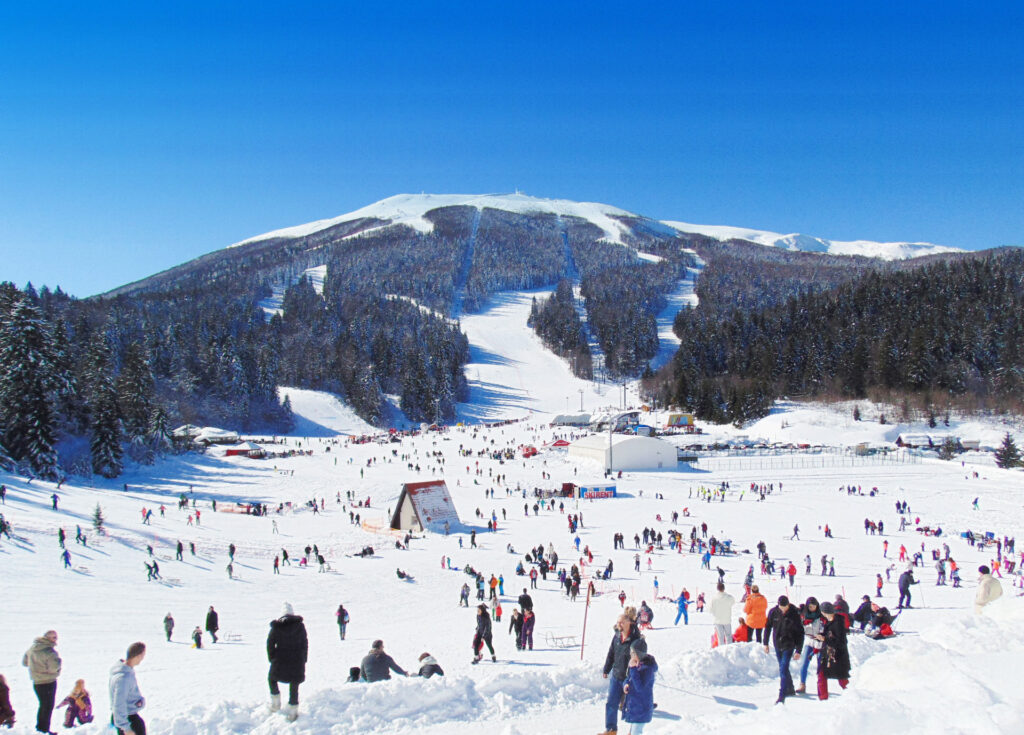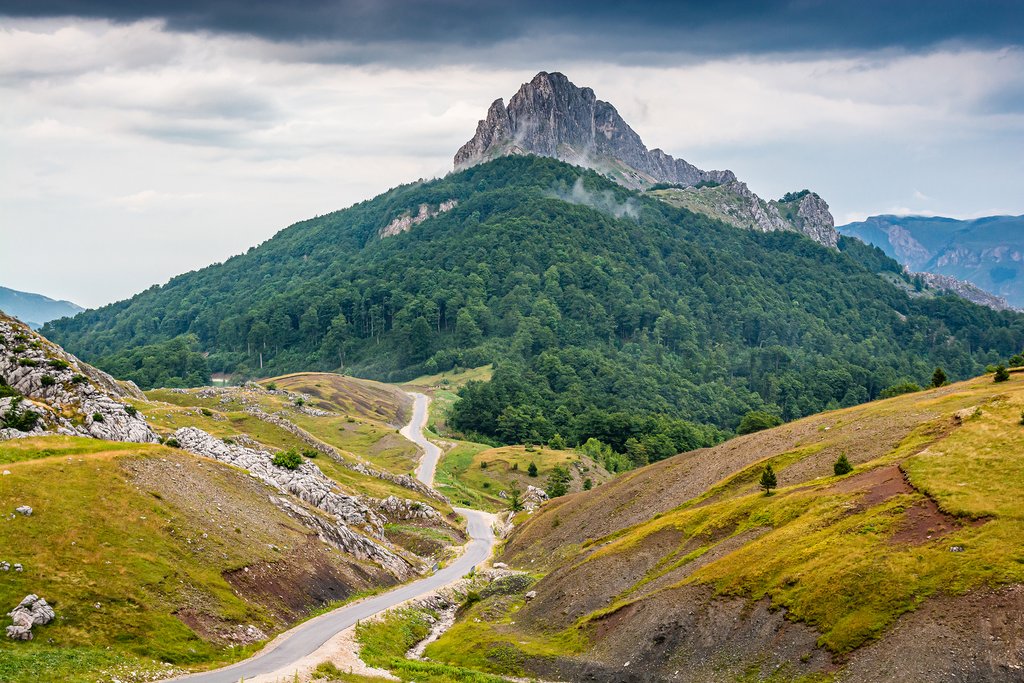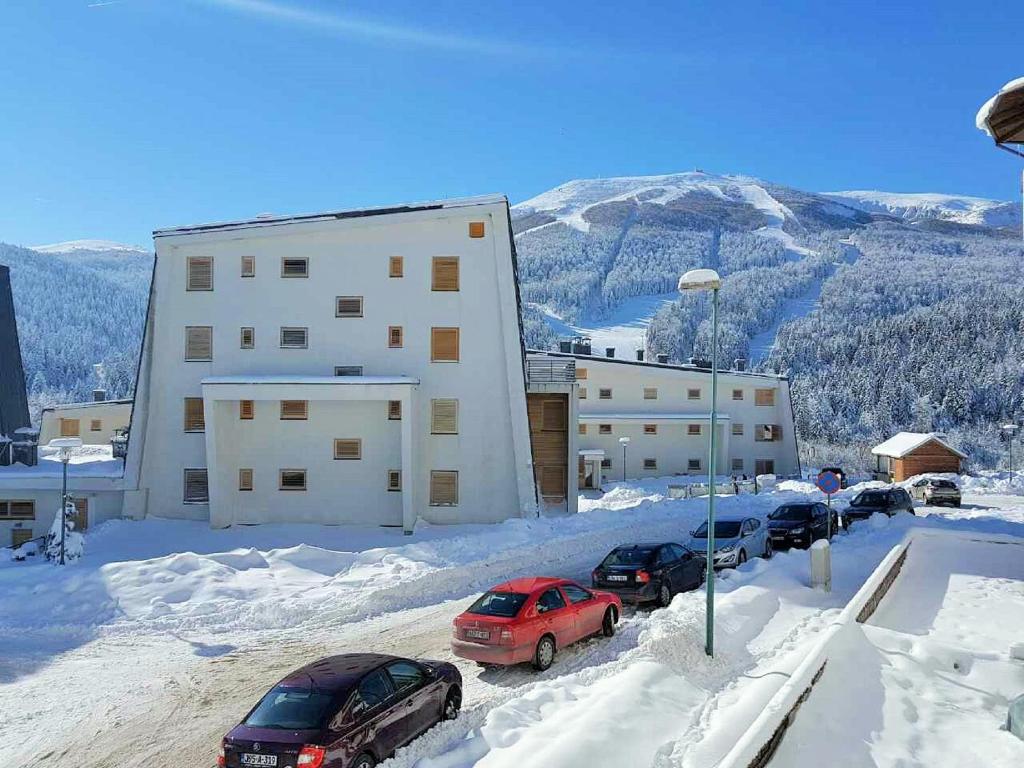Bjelašnica is a mountain in central Bosnia and Herzegovina. It is found directly to the southwest of Sarajevo, bordering Mt. Igman. Bjelašnica’s tallest peak, by which the whole mountain group got its name, rises to an elevation of 2067 meters (6782 feet). Other notable peaks are Krvavac (2061 m), Mali Vlahinja (2055 m), and Hranisava (1964 m). The Bjelašnica range is bordered by the Rakitnica in the south, the Neretva in the west, Mt Igman in the north-east and Mt Ivan in the north-west. Only at 20 minutes distance of Sarajevo, it is a tourist attraction for hiking and skiing.
Bjelašnica has been, in certain areas, the site of extensive combat during the 1992-’95 Siege of Sarajevo and particular areas pose a high mine risk. There are numerous trails set up and maintained by local mountain clubs that lead to the bald peaks higher up. The mountain is also visited by mountain bikers and has become a base for some paragliders.
Bjelašnica Olympic Mountain Ski Centre
The Bjelašnica Olympic Mountain Ski Centre and its facilities are all located on the eastern slope of Bjelašnica main summit. There are 6 lifts, with one modern three-seat carrier lift departing from Babin Dol, three anchor lifts and two remaining single saucer lifts. Next to the original 3100 meter Olympic Downhill run and the Giant Slalom run there are four more pistes varying in length between 3200 and 550 meters and covering all difficulty levels between bleu-red-black. A lot of investment has been done to develop the Ski Centre and the Babin Dol area since the era directly following the Dayton Agreement, with another peak during the last couple of years. New hotels, apartment complexes and restaurants have turned this area into a modern ski resort. The latest redevelopment has seen the replacement of the old ski lift with two modern ski lifts and a state of the art snow production system, ready to operate for the 2017/2018 ski season. This was done as part of the preparations for the 2019 European Youth Olympic Winter Festival, which was hosted by Sarajevo and Istočno Sarajevo in February 2019.
Hiking
The Bjelašnica range consists of basically three ridges, the Vlahinja ridge, the Strug ridge and a more southern ridge parallel to the Rakitnica and separated from the other ridges by a wide valley called Dugo Polje. A number of hikes exist in these mountains. One trail approaches the Bjelašnica main summit (2067 m.) from the north and is called Josipova Staza after its most famous hiker: Josip Broz Tito. From the main summit a ridge walk leads north-east towards the summit of Mala Vlahinja (2055 m.). The last summit of this ridge in the west is called Hranisava (1964 m.) and can be better ascended to by a trail starting in the hamlet of Lokve, between Hadžići and Pazarić. This offers a hike towards a view from this most western summit of the Bjelašnica range. Another hike departs from Dugo Polje and leads via a difficultly retrieved trail through thick shrubs of Pinus Mugo the summit of Krvavac (2061 m.). One of the hikes leads parallel to the Rakitnica Canyon, departing from Umoljani and ending at Lukomir, known to be the last all-year-through inhabited semi-nomadic settlement at this altitude in the Balkans. There is quite a number of well equipped mountain huts to be found within this mountain group. Stanari P.D. (1540 m.) is an excellent base for hikes in the central-western part of the mountain range. There are other mountain huts at Sitnik, Umoljani and Lukomir that might require prior reservation.





